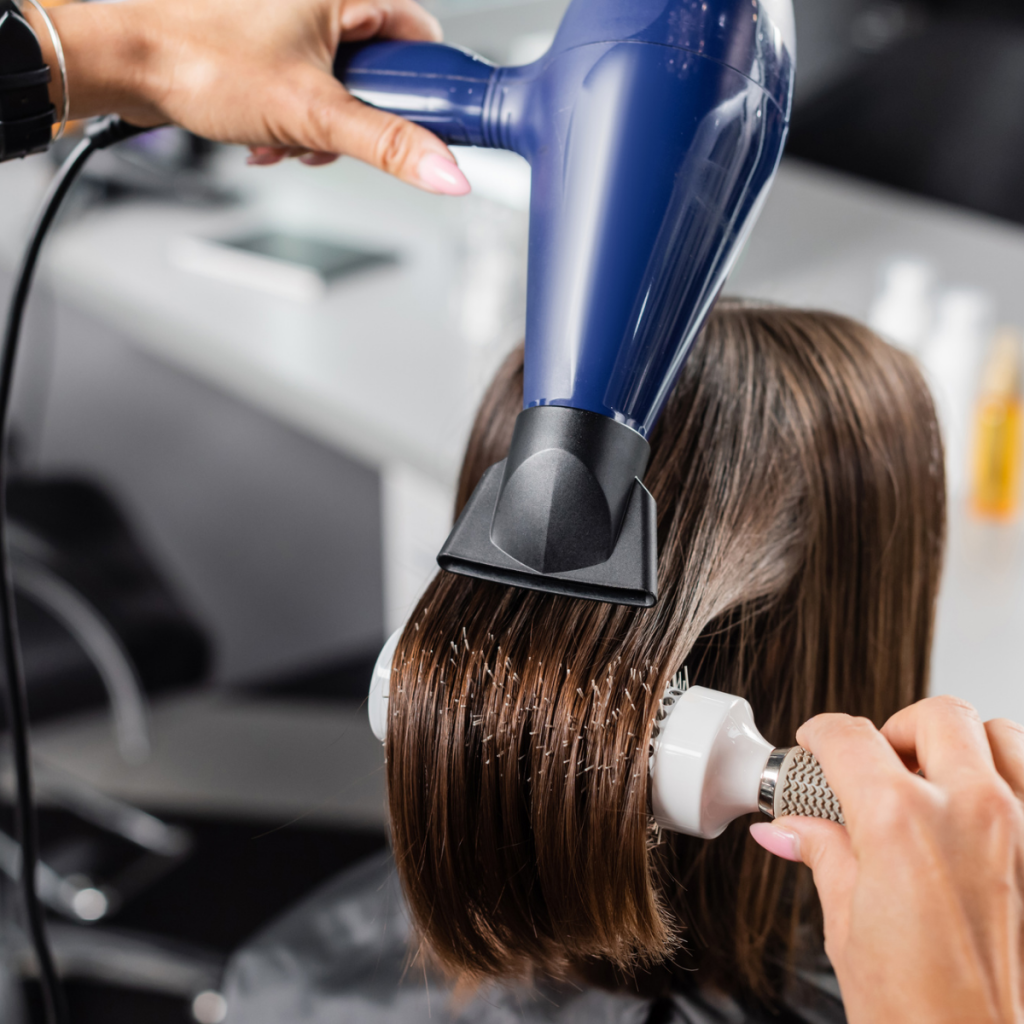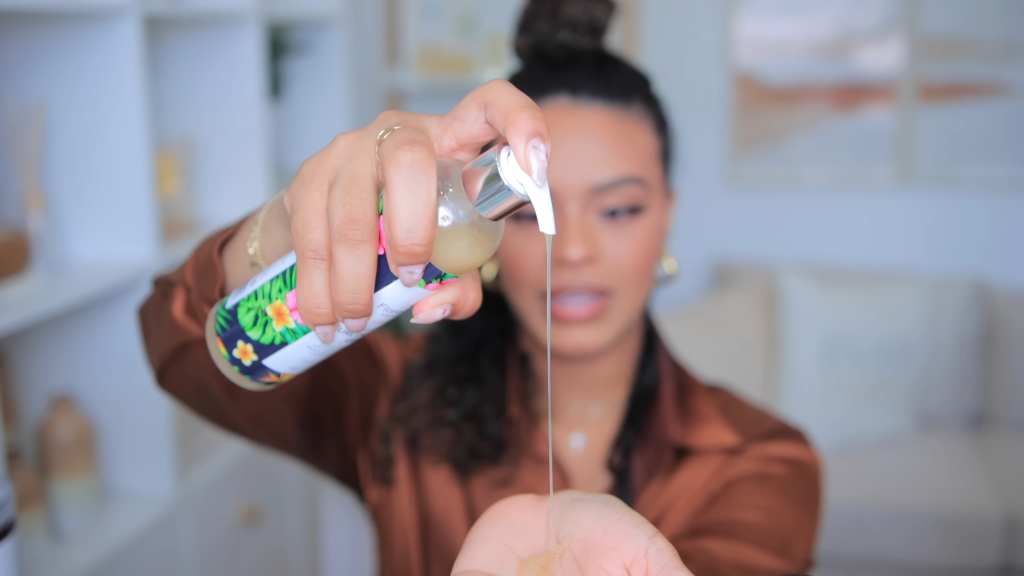Discover the truth about whether heat styling can cause damage to chemically treated hair.
Can Heat Styling Damage Chemically Treated Hair?
If you’ve ever wondered whether your sizzling hot styling tools are wreaking havoc on your chemically treated locks, you’ve come to the right place! In this article, we’ll take a deep dive into the fascinating world of hair structure and chemistry to understand how heat styling affects chemically treated hair. So grab your favorite beverage, put on your reading glasses, and let’s embark on this delightful hair adventure together!

Understanding Hair Structure and Chemistry
Before we delve into the sizzling details of heat styling and chemical treatments, let’s take a moment to appreciate the complex anatomy of a hair strand. Picture this: each strand of hair is like a tiny superhero, composed of different layers with unique superpowers.
At the core, we have the medulla, which is like the hair’s hardworking energy source. The medulla, although not present in all hair types, plays a crucial role in the overall structure of the hair strand. It consists of loosely packed cells and air spaces, providing insulation and aiding in the hair’s flexibility. However, its exact function is still a mystery to scientists, as it varies in size, shape, and presence across different individuals.
Surrounding the medulla, we have the cortex, the mighty warrior responsible for giving your hair its strength, color, and texture. This layer is composed of long, fibrous proteins called keratin, which are tightly packed and intertwined. The cortex determines the natural color and texture of your hair, whether it’s straight, wavy, or curly. It also gives your hair its elasticity, allowing it to stretch and bounce back to its original shape.
And finally, we have the cuticle, the hair’s outermost protective layer, which is like a shield defending your strands from the big, bad world. The cuticle consists of overlapping scales, similar to the shingles on a roof, that protect the inner layers of the hair strand. These scales also play a vital role in retaining moisture within the hair, preventing it from becoming dry and brittle.
Chemical treatments have the remarkable ability to alter this superhero-like structure. They can change your hair’s texture, color, and even its super strength. For example, hair dye works by penetrating the cuticle and cortex, depositing color molecules that alter the natural pigmentation of your hair. Similarly, chemical relaxers and perms break down the protein structure of the cortex, allowing it to be reshaped and restructured.
But what happens when heat enters the picture? Heat styling tools, such as flat irons and curling wands, can temporarily alter the shape and texture of your hair. When heat is applied, the hydrogen bonds within the cortex are temporarily broken, allowing the hair to be reshaped. As the hair cools down, the hydrogen bonds reform, locking in the new shape. However, excessive heat can cause damage to the cuticle, leading to frizz, split ends, and overall weakened hair.
The Science Behind Heat Styling
Ah, heat styling—our beloved ally in helping us achieve those fabulous locks. But what exactly happens when we crank up the heat? Well, get ready for a tiny bit of hair science, my friend!
When heat encounters your hair, it penetrates the cuticle layer, causing the water molecules within the cortex to evaporate. This leads to temporary changes in the hair’s shape, allowing you to mold it into your desired style. Fascinating, isn’t it?
But let’s dive deeper into the intricacies of this process. As the heat from your styling tool reaches your hair, it breaks down the hydrogen bonds that hold the hair’s structure together. This enables the hair to become more pliable, making it easier to manipulate and style. However, it’s important to note that excessive heat can damage the protein structure of the hair, leading to dryness, brittleness, and even breakage.
Now that we have a basic understanding of the science behind heat styling, let’s explore how heat affects chemically treated hair and whether those effects are friend or foe.
Chemically treated hair, such as hair that has been colored, permed, or chemically straightened, is already more vulnerable and prone to damage. When heat is applied to chemically treated hair, it can exacerbate the negative effects. The combination of chemical treatments and heat styling can lead to further moisture loss, weakening the hair’s internal structure and causing it to become more susceptible to breakage.
On the other hand, heat styling can also have some positive effects on chemically treated hair. For example, when heat is applied to chemically straightened hair, it can help to set the new shape and make the straightening process more effective and long-lasting. Additionally, heat can enhance the vibrancy and intensity of color-treated hair, giving it a lustrous shine.
However, it’s crucial to strike a balance between using heat styling tools and protecting the health of your hair. Using heat protectant sprays or serums can create a barrier between your hair and the heat, reducing the potential damage. Additionally, opting for lower heat settings and limiting the frequency of heat styling can help minimize the negative impact on your hair.
So, while heat styling can be a powerful tool in our hair care arsenal, it’s important to understand the science behind it and take steps to protect our hair from excessive damage. By being mindful of the heat we expose our hair to and using protective measures, we can enjoy the benefits of heat styling while keeping our locks healthy and beautiful.
The Impact of Heat Styling on Chemically Treated Hair
Time to unveil the sizzling truth about how heat styling can impact your chemically treated tresses. Brace yourself, my friend, because the results might surprise you!
Chemically treated hair is already more vulnerable to damage due to the chemical processes it has undergone. Whether you’ve had a relaxing treatment to straighten your curls or a perm to add some bounce, your hair needs extra care and attention. And when it comes to heat styling, there are a few things you should know.
Immediate Effects of Heat Styling on Treated Hair
Heat styling tools can cause immediate changes to chemically treated hair, such as temporary loosening of curls or waves. This can be a blessing for those who want to switch up their look now and then.
But here’s the catch: excessive heat can also strip away the natural moisture and oils from your hair, leaving it dry, brittle, and prone to breakage. Yikes! We all love a sleek and smooth hairstyle, but not at the cost of our hair’s health.
So, how can you protect your precious locks from the harmful effects of heat? One way is to invest in a good heat protectant spray. These sprays create a barrier between your hair and the heat, reducing the damage caused by styling tools. Another tip is to adjust the temperature setting on your styling tools. Lower heat settings can still give you the desired style without frying your hair.
Long-Term Damage from Heat Styling
Consistent and excessive heat styling can take a toll on chemically treated hair in the long run. The excessive heat can weaken the hair’s structural integrity, leading to split ends, frizz, and a sad, lackluster appearance.
But don’t lose hope just yet! There are ways to minimize the damage and keep your chemically treated hair looking its absolute best. One of the most effective ways is to incorporate regular deep conditioning treatments into your hair care routine. These treatments help replenish the lost moisture and nutrients, leaving your hair soft, shiny, and more resilient.
Additionally, giving your hair regular breaks from heat styling can work wonders. Embrace your natural texture and opt for hairstyles that don’t require excessive heat. Not only will this give your hair a chance to recover, but it can also open up a world of new styling possibilities.
Lastly, don’t forget the power of a good trim. Regular visits to the salon for a trim can help get rid of split ends and prevent further damage. It’s a small step that can make a big difference in the overall health and appearance of your chemically treated hair.
In conclusion, heat styling can have both immediate and long-term effects on chemically treated hair. While it can provide temporary styling options, it can also cause damage if not done properly. By following a few simple tips, such as using heat protectant sprays, adjusting temperature settings, incorporating deep conditioning treatments, giving your hair breaks from heat styling, and getting regular trims, you can keep your chemically treated hair looking fabulous while minimizing the potential damage. So go ahead, rock those heat-styled looks with confidence!
Protecting Your Chemically Treated Hair from Heat Damage
Now that we’ve established how heat styling can potentially harm chemically treated hair, it’s time to reveal our ultimate shield for protection!

Best Practices for Heat Styling Treated Hair
When it comes to heat styling, moderation is key. Avoid using high temperatures and opt for heat tools with adjustable settings. And always remember to use a heat protectant spray before your styling adventure!
Additionally, try not to subject your precious strands to heat styling every day. Give them a break and let them breathe. Your hair will thank you for it!
Recommended Products for Heat Protection
Now that you know the importance of heat protectants, you’re probably itching to know which magical potions to add to your haircare arsenal. Fear not, for we’ve got you covered!
- Miracle Mist: This fabulous potion creates an invisible shield on your hair, protecting it from the scorching heat. Spritz it on and let the magic happen!
- Lock & Protect Serum: This serum is like a superhero sidekick, providing an extra layer of protection while taming frizz and adding shine. Say goodbye to dull, heat-damaged hair!
- Heat-Defying Spray: This mighty spray shields your hair from the fiery wrath of heat styling tools, keeping your strands safe and sound. Embrace the power of heat protection!
Alternatives to Heat Styling for Chemically Treated Hair
Wait, did you think heat styling was the only way to achieve fabulous hair? Think again, my friend! There’s a whole world of non-heat styling techniques waiting to be explored.
Non-Heat Styling Techniques
Oh, the wonders of non-heat styling! From braids and twists to overnight curls and updos, the possibilities are endless. Experiment with these techniques and discover a whole new world of hair fabulousness, without subjecting your precious locks to the fiery wrath of heat.
Embracing Natural Hair Texture
Last but certainly not least, why not celebrate and embrace your hair’s natural texture? Work with what your momma gave you, my friend! Whether you have luscious curls, sleek straight strands, or a little bit of everything, rock it with confidence and let your natural beauty shine!
Wrap Up
So, there you have it—our delightful journey through the world of heat styling and chemically treated hair has come to an end. We’ve explored the fascinating science behind it, uncovered the potential damage, and revealed the secrets to protecting your tresses.
Remember, with great power comes great responsibility. Treat your chemically treated hair with love, care, and a healthy dose of heat protection. And when you’re feeling adventurous, don’t forget to explore the wonderful world of non-heat styling techniques and embrace your natural hair texture.
Now, go forth, my friend, armed with knowledge and fabulous hair, and conquer the world, one sizzling hairdo at a time!





